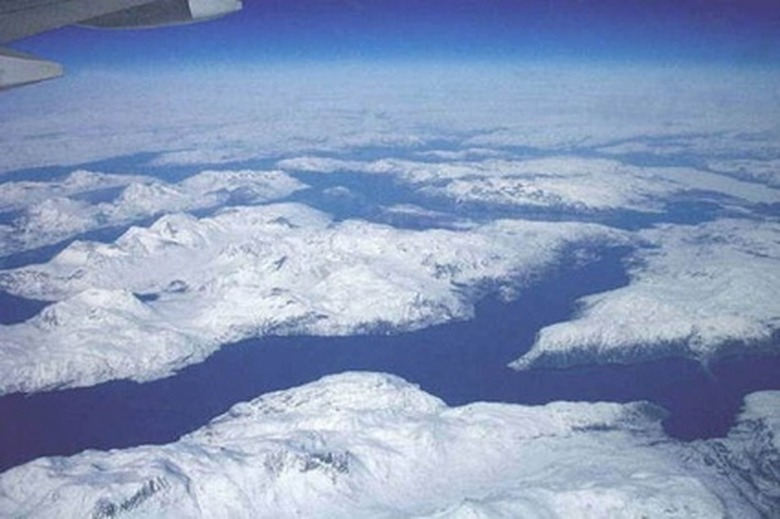Life Cycle Of Harp Seals
The harp seal is a distinctive-looking pinniped (the group of marine mammals including seals, sea lions and walruses) native to the high-latitude waters of the Arctic Ocean and North Atlantic.
Three major populations, or stocks, are typically defined: one breeding on the "East Ice" of Russia's White Sea, one breeding on the Greenland Sea's "West Ice" and the Northwest Atlantic stock, which is the most numerous of all at more than 7 million animals.
The life of a harp seal, which can play out across several decades, includes some striking changes in physical appearance and a whole lot of briny mileage covered in annual migrations.
Harp Seal Life Cycle
Harp Seal Life Cycle
Female harp seals give birth to pups between late February and mid-March. They seek out pack ice – a vital form of harp seal habitat – in the southern reaches of the species' range for the purpose of breeding.
Pups weigh about 25 pounds at birth, but a steady diet of their mother's fatty milk helps them quickly gain bulk at an impressive rate of as much as five pounds per day. Much of that weight is the all-important blubber that will keep them insulated in their chilly aquatic playground.
Weaning is a bit on the tough-love end of the spectrum for pups. When they're roughly 80 pounds or so, their mothers essentially abandon them for the company of males in order to mate (an activity that typically takes place in the water). Pups then undergo a lean period of fasting on the ice for up to six weeks, surviving off their blubber stores and sometimes losing up to half their body weight, before they finally follow their appetites into the water.
After a female harp seal has mated, the fertilized embryo doesn't actually implant in the uterus for about three months. This delayed implantation – a phenomenon found in numerous mammals – allows the resulting birth to coincide with the seasonal buildup of the pack ice essential for pupping.
Pelt Transformations
Pelt Transformations
An adult harp seal gets its name from the crescent-shaped black mark on its back, which (sort of) resembles a harp. The typical getup of a full-grown harp seal, which besides that dorsal mark includes a black face and a silvery gray body, contrasts sharply with the pure-white coat of a newborn pup. The transformation between the baby and adult coats comes in incremental molts.
That initial pelt – called a lanugo – gives the youngest harp seal pups the nickname of "whitecoats." After several weeks, the whitecoats molt, which means they shed their fur and outer layers of skin. This first molt introduces a grayish cast to their pelt: the "graycoat" phase. This, in turn, transitions into a spotted coat, when the juvenile seals are called "beaters" for their unpracticed tail-thrashing in the water.
Older juvenile harp seals with gray coats showing lingering spotting are called "bedlamers." This bedlamer pelt remains for several years, turning over to the solid gray of adulthood with sexual maturity. This transition is a fairly rapid final costume change for males, but a more gradual one for females, some of which keep some spotting their entire lives.
Yearly Movements of the Harp Seal
Yearly Movements of the Harp Seal
The pupping season sees harp seals gather in large groups that may number several thousand. After the mating period that comes on the heels of pup weaning, adult harp seals move north to undergo their annual spring molt – another activity that sees significant communal seal haul-outs.
After the molt, seals continue to migrate northward into Arctic waters for summer feeding. In the fall, they drift southward to eventually return to their breeding grounds. That migratory round can see harp seals traveling more than 3,000 miles in a year.
Harp Seal Mortality
Harp Seal Mortality
A harp seal's lifespan may exceed 30 years, but plenty of mortality factors can cut such a run short. Those include starvation, certainly, which is a real risk for those weaned pups wasting away on the pack ice. A number of impressive predators, meanwhile, pose a threat to both immature and adult harp seals.
Those predators include orcas (or killer whales), large sharks (such as the great white shark on the southern fringe of the harp seal's range and the huge Greenland shark of subarctic and Arctic waters) and the polar bear, the great "ice bear" that serves as the most significant predator on the harp seal's High Arctic summer range. (See Reference 3, p. 830.)
Human beings also have long killed harp seals, both on a subsistence basis for meat as well as to feed the ongoing commercial demand for seal pelts.
Cite This Article
MLA
Shaw, Ethan. "Life Cycle Of Harp Seals" sciencing.com, https://www.sciencing.com/life-cycle-harp-seals-6735960/. 22 November 2019.
APA
Shaw, Ethan. (2019, November 22). Life Cycle Of Harp Seals. sciencing.com. Retrieved from https://www.sciencing.com/life-cycle-harp-seals-6735960/
Chicago
Shaw, Ethan. Life Cycle Of Harp Seals last modified March 24, 2022. https://www.sciencing.com/life-cycle-harp-seals-6735960/
